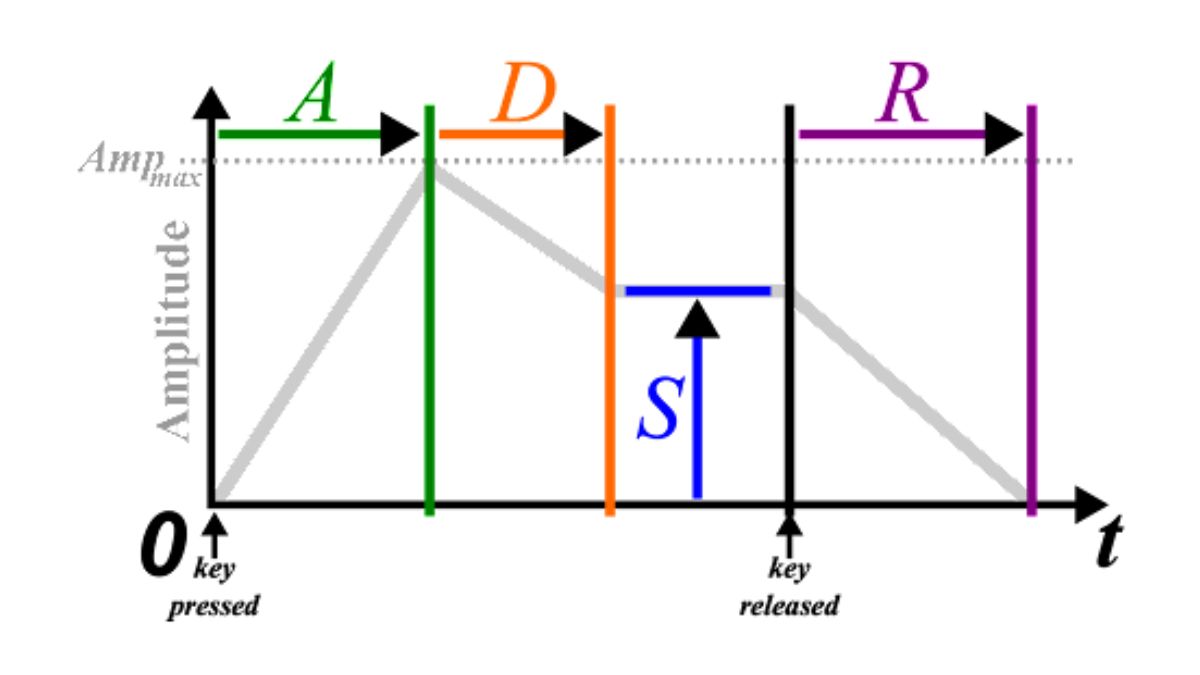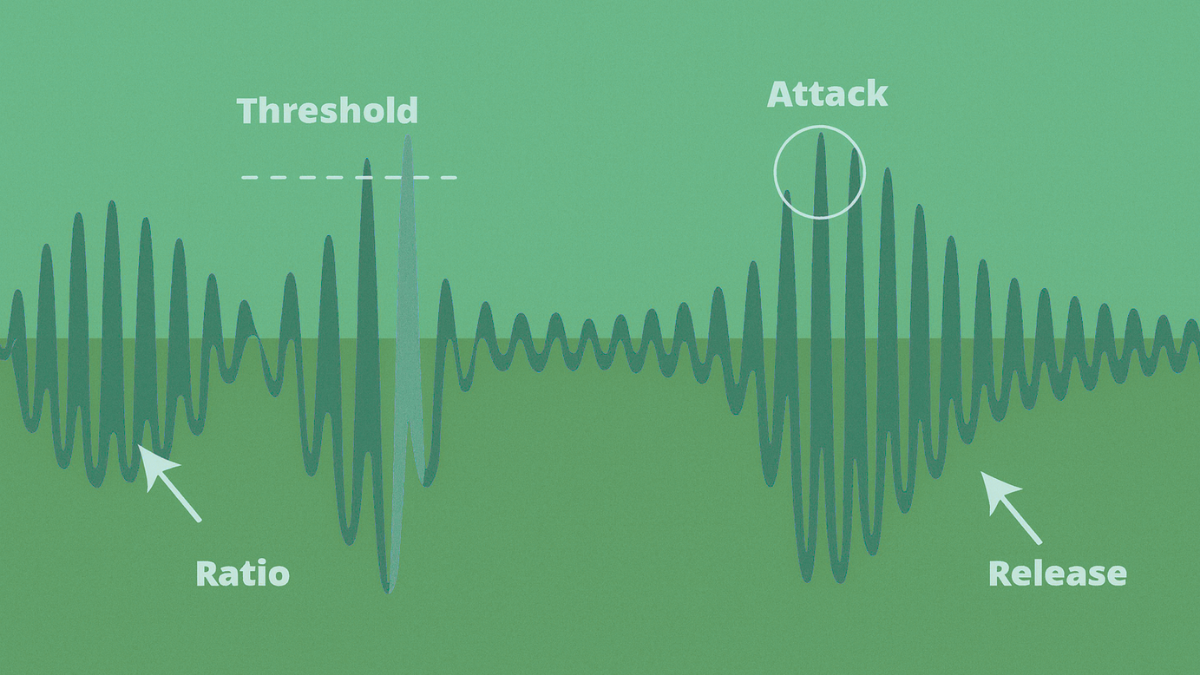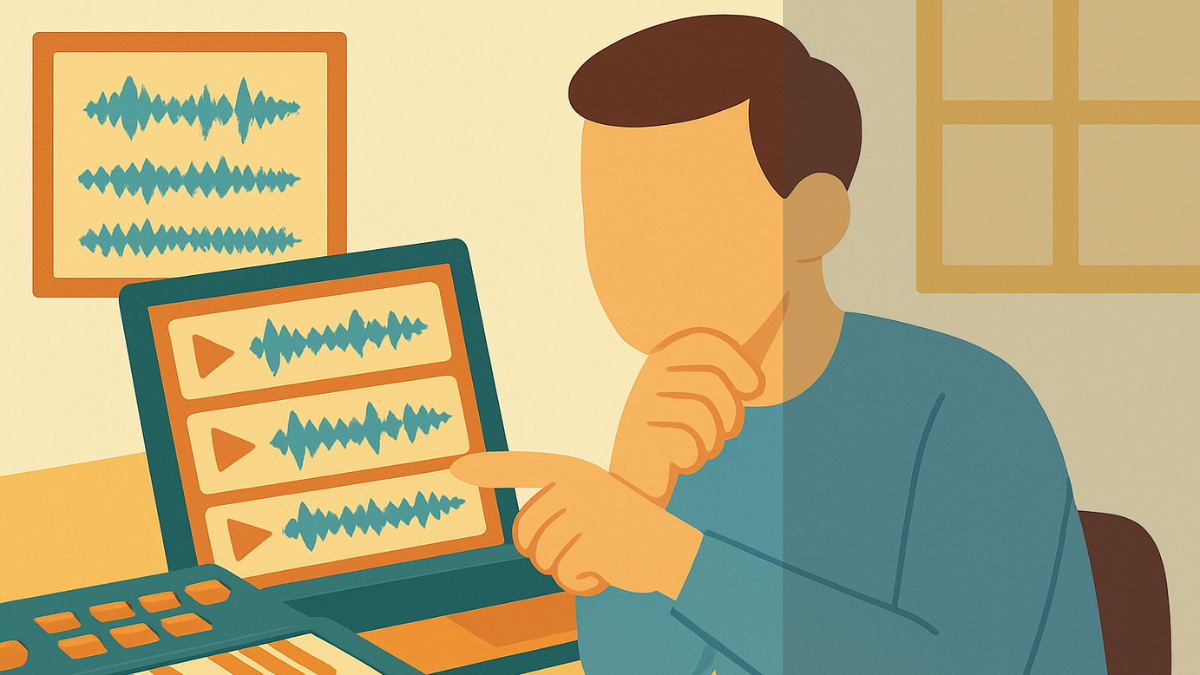What is A Synthesizer? A Beginner's Guide to Audio Synthesis

Synthesizers are everywhere in music. Electronic genres are booming, and synths are all over pop and hip-hop. Even in more traditionally guitar-based genres such as indie and metal, many artists frequently use these instruments.
If you’re starting your journey as a music producer, you will need to get to grips with synths.
In this article, we will start with the basics so that you can understand what synths are and how they work.
We’ll explain a little about the history of the synthesizer. We’ll compare analog and digital synths, software and hardware synths, and discuss the difference between monophonic and polyphonic synths.
We’ll go on to explain the different building blocks used to create synthesizer patches, the various types of synthesizers out there, and which you may want to investigate.
What is a Synthesizer?
Synthesizers are electronic instruments that use analog or digital processing to generate sound. Synthesized sounds start out as very simple audio signals known as waveforms generated by oscillators (more on these below).
As these basic waveforms pass through the various components of the synth, they are sculpted, filtered, and augmented in various ways, allowing us to eventually produce an extremely wide range of complex sounds with these instruments.
In the early days of synths, they were often used to try to emulate (or synthesize) the sound of traditional acoustic instruments. While they can still be used to do this, synths are much more common these days to create sounds that couldn’t have been dreamed of in the pre-electronic era.
Analogue vs. Digital Synthesizers
Early synthesizers were produced in the pre-digital era.
That meant that they had to function using purely analog technology. Analog synths, as we recognize them today, were first introduced in the 1960s.
They generate sound directly from electricity, turning it into sound via the synth’s oscillators. Different tones are created by controlling the voltage of the signal and the route it takes through the synthesizer’s circuitry.
Analog synths are held in high regard today, as many people love the rich, warm tone generated by their circuitry.
However, from the 1980s onwards, digital synthesizers joined the party. Digital technology allowed for entirely new forms of synthesis and much greater flexibility. Digital technology was also much cheaper and at this point, synthesis became much more approachable to amateur musicians.
Software vs. Hardware Synthesizers
Since the 1990s, music production itself has become a primarily digital pursuit. Alongside hardware synths such as those that were used in previous decades, we can now use software synthesizers that operate entirely inside our DAWs (Digital Audio Workstations).
While many synth enthusiasts still prefer the hardware options, there is an incredible range of software synths out there. Some of these very accurately mimic vintage synths, while others use newer technology that allows us to create sounds that were out of reach to previous generations of electronic musicians.
If you are chasing a truly analog sound, the one way to achieve it is by using hardware synths. You may also like the tactility of a physical synthesizer so may take the hardware route even if you want to work with digital synths. However, it’s worth considering the flexibility and ease-of-use you get with a synth built into your DAW.
Monophonic vs. Polyphonic Synthesizers
Monophonic synthesizers can only play one note at a time.
That means they are generally more suited to playing lead and bass parts where their inability to play chords is not a problem. You'll need a polyphonic synth if you want to play more than one note simultaneously.
The number of notes that can be played simultaneously on a polyphonic synth is often limited, so look into this when making a purchase.
A synth with ‘four voice polyphony’, for example, will let you play four notes at the same time.
On many software synths, you can change the number of voices available on a particular patch. So you might find a preset you like that is monophonic by default but that can be switched to polyphonic if necessary.
The History of Synthesizers
We’ve mentioned how, in the 1960s, the first recognizably ‘modern’ synths began to appear. However, electronic instruments have been around for much longer. The telharmonium was an electric organ that was patented way back in 1897. The first Hammond organ was released in the mid-1930s.
The Theremin is a fascinating instrument controlled without physical contact by the performer. It was patented in 1928, and you may well be familiar with its sound as it has been used frequently since in science fiction and horror films.
The Moog synthesizer debuted in 1964, and this was really the beginning of the age of synthesis. Early Moogs were large, modular synthesizers (they were built of numerous components or modules that were connected with patch cords). In 1970, the Minimoog was introduced and suddenly synthesizers became much more accessible.
These were the first synths to be sold in music stores. They were expensive and, therefore, would mainly have been used by serious musicians, but this was the beginning of synths really entering the mainstream. They differed from the early Moogs in that they weren’t modular, and they had a keyboard built into them. In other words, they looked a lot like most synthesizers do today.
Very quickly, more synthesizer companies were established, with brands such as ARP and EMS entering the fray. In the late 70s, digital synths started to appear, and in 1983 Yamaha released the DX7 – the first synthesizer to sell more than 100,000 units. This classic synth remains one of the best-selling of all time and ushered in an era in which the synth became a truly mass-market instrument.
The 1990s saw the birth of software instruments and a revival in interest in analog synths. During the early 2000s, the analogue synths of the 70s became prized for their warm sound and often sold for much more than their original prices. This led to various companies such as Moog, Korg, and Arturia producing brand-new analog synths in the 2010s for more affordable prices.
Software synths kept developing, with analog emulations becoming much more accurate in sound, while software companies such as Xfer Records and Native Instruments continued to push the boundaries of the kinds of sounds that could be produced through synthesis.
The Basic Building Blocks of Synthesizers
To start experimenting with synths, it is important to understand how synth sounds are created. This will help you learn how to edit presets quickly and effectively and set you on the road to creating your own sounds from scratch.
Once you get your head around how the sound is generated and sculpted, you will learn how to adjust parameters to create the exact tone you require. Below we’ll introduce you to the basic building blocks of synthesizers and explain what each of these components does.
Oscillators
The signal path in a synth begins with the oscillators. We already mentioned these above; they generate basic waveforms that form the basis of synthesized sound. A sine wave is the purest, most simple sound. Harmonics can be added to create other slightly more complex waveforms.
Harmonics are overtones – additional higher frequency notes – that are layered on top of our root note or fundamental frequency. They make the sound richer and more complex.
Introducing harmonics can create new wave shapes such as square, triangle, and sawtooth waves. Each waveform sounds different, and on most synths, you can choose which wave shapes you want your oscillators to produce.
Let’s use an example to explain this process more clearly. A 100Hz sine wave consists of just that single 100Hz tone. However, a 100Hz sawtooth wave is generated by layering multiple additional sine waves on top of that fundamental 100Hz frequency. It will feature harmonics at 200Hz, 300Hz, 400Hz, and so on – with each additional harmonic being quieter than the last.
It is pretty common for synths also to feature a noise generator. This produces a sound like the static you might hear on a radio set. It can be blended with the sounds produced by the oscillators to provide more crunch and thickness.
Filters
To explain what filters do on a synth, let’s use an analogy. If we compare the creation of a synthesized tone to the creation of a sculpture, when we choose the waveform our oscillator will generate, that’s like choosing the type of rock we are going to carve our sculpture from – we are selecting the raw material.
Filters are like a sculptors tools – we can use them to begin carving a distinct shape out of the raw material we have selected.
The most common filter types are high-pass and low-pass filters. High-pass filters cut all frequencies below a certain point (they let the high frequencies pass through), and low-pass filters cut all frequencies above a certain point.
We can therefore use these to make our sound thicker or thinner, darker or brighter. Filters can also boost frequencies. You will often see control on the filter section of a synth marked ‘resonance’ – you can use this to create a louder peak at a filter’s cut-off frequency (the point at which it starts filtering out sound).
This creates a ringing sound and can produce some dramatic effects if the filter is adjusted in real time while the synth is performing.
LFO
LFO stands for low-frequency oscillator. This oscillator does something different from those we’ve already discussed – it transmits frequencies that are actually below the limit of human hearing, which means you can’t hear them.
What you can hear is their effect on the sound generated by your other oscillators. LFOs are used to modulate your synth tone – you can use them to create a wobbly vibrato or shimmering tremolo effects.
Think of the classic dubstep ‘wub’ bass sound; the fluctuating tone is the sound of an LFO in action. An LFO can be synchronized to the tempo of your project so that the modulation locks in with the rhythm of your music – or it can move freely.
ADSR Envelope
ADSR stands for attack, decay, sustain, and release.
An ADSR Envelope controls how a sound behaves over time, from the moment it is triggered. How a sound begins is determined by its attack. A sound with a very short attack will begin very suddenly and sharply – think of a drum hit or a hand clap.
As the attack time gets longer, the sound begins more gradually. A swelling violin note has a long attack time.
Decay is how quickly the sound dissipates from its initial impact. A plucked violin string has a fast decay time, whereas a powerfully struck piano note has a longer decay time.
Sustain controls how long a note lasts while you are holding it down. A plucked violin note has no sustain at all, whereas a held piano note can have a much longer sustain time. A synth can sustain infinitely if we want it to – the sound will continue for as long as we hold the note down.

The release dictates how long the note will ring out for after we have released the note. A very short release means that the note will stop almost as soon as we release the key. A release time of two seconds means that it will take that long for the sound to fade out to nothing once we have let go of the key.
Types of Audio Synthesis
There are numerous types of synthesis, and they can be used to create very varied sounds. Below we briefly describe some of the most common types you may encounter.
Subtractive: Analog & Virtual Analog Synthesis
The classic analog synths worked with subtractive synthesis – and the modern virtual instruments that mimic them operate similarly.
This type of synthesis is described as ‘subtractive’ because you start with a base waveform and remove (subtract) frequency content from it with filters and envelopes until you have your desired sound.
We have already explained how analog synths are prized for their rich, warm tones. This is due to the complex behavior of a waveform as it travels through the analog synth circuitry. It is colored by these circuits, meaning the sound created is not perfect or pristine – but it does have character.
Older analog emulations tended to sound too clean and digital – they couldn’t match the original machines' sound. However, newer analog emulations mimic the original analog circuits' architecture to get as close to that desired analog sound as possible. They often sound great – much closer in tone to the synths that inspired them.
Additive Synthesis
Additive synthesis works in the opposite way of subtractive synthesis.
Instead of subtracting from a waveform, we build a new sound from scratch – one harmonic at a time. In additive synthesis, we can create sounds by controlling each harmonic's frequency and amplitude (volume).
That means we can create unusual sounds that would be out of reach if we used subtractive synthesis. We can do off-the-wall things with our harmonics – moving them out of tune, for example. We can end up with incredibly interesting and complex sounds that can be useful in sound design or as unusual sounding pads.
FM Synthesis
Yamaha’s famous and successful DX7 used FM (frequency modulation) synthesis, and the sound is somewhat associated with that era.
So if you want to mimic 80s keyboard sounds, this could be the way. The DX7 piano sound is a classic but sounds very much like a digital version of a piano. It’s very clean and pristine – not much like a real piano at all, but nonetheless, a sound that is associated with numerous classic records.
This is a fairly complex form of synthesis. It works through the use of two oscillators; the first, known as the carrier, generates the original frequency, while the second oscillator modulates it by introducing additional harmonics over time.
Wavetable Synthesis
Rather than using basic waveforms generated by an oscillator as the building blocks of their sounds, wavetable synths use a sample of a recording. This can be a recording of anything, from an instrument to an animal call to the sound of rain. A wavetable synth grabs a snapshot, or a selection, of this sample and uses it as its raw material.
This allows for wildly varying sounds, and these synths have become incredibly popular across a wide range of electronic genres in recent years.
Modular Synthesis
Modular synthesis takes us back to the days of the original Moog! These synths are deconstructed into separate modules – one for an oscillator, one for a filter, and so on. Essentially this form of synthesis allows you to custom-build your own synth.
Rather than buying a closed box that functions in a certain way, you can connect different modules together in any configuration you wish. This synthesis style is possible either with hardware (where you can buy modules individually) or with software that allows you to patch together different module types virtually.
Granular Synthesis
Granular synthesis is a great way of creating weird and wonderful sounds. It uses a sample as the basis for its sound – breaking the recording into tiny snatches of audio called grains. These grains can then be layered, modulated, and edited to build otherworldly textures that evolve over time.
Synthesis is an incredibly deep and rich area within the broader subject of music production. Whole subcultures have built up around areas such as modular synthesis alone! We hope that you use this article as a jumping-off point.
Now that you know the basics, you can go ahead and start creating synth patches right away, but you can also zero in on the parts of synthesis that you find more interesting and really begin to get to know them in depth. At the very least we hope that the next time you look at a synth, you won’t find that array of knobs and buttons to be so bewildering!



Comments:
Dec 20, 2024
Dec 20, 2024
Dec 07, 2024
Login to comment on this post